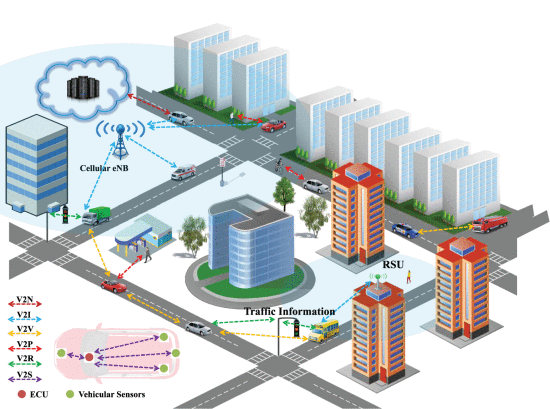Artificial Intelligence for Vehicle-to-Everything: A Survey
Recently, the advancement in communications, intelligent transportation systems, and computational systems has opened up new opportunities for intelligent traffic safety, comfort, and efficiency solutions. Artificial intelligence (AI) has been widely used to optimize traditional data-driven approaches in different areas of the scientific research. Vehicle-to-everything (V2X) system together with AI can acquire the information from diverse sources, can expand the driver's perception, and can predict to avoid potential accidents, thus enhancing the comfort, safety, and efficiency of the driving. This paper presents a comprehensive survey of the research works that have utilized AI to address various research challenges in V2X systems. We have summarized the contribution of these research works and categorized them according to the application domains. Finally, we present open problems and research challenges that need to be addressed for realizing the full potential of AI to advance V2X systems.
Introduction
The latest developments in the AI techniques have opened up new opportunities for the Intelligent Transportation Systems (ITS). The vehicular sensors are also becoming smarter with time, resulting in an ability of the vehicles to better assess the environment. This advancement has led to the possibility of realizing autonomous driving that is based on the idea of imitating human driving behavior while mitigating human faults. A plethora of applications have been developed starting from active and passive road safety to the optimizing traffic, ranging from autonomous vehicles to the Internet of vehicles [1].
The V2X paradigm is essentially based on sharing of information in the form of Vehicle-to-Infrastructure (V2I), Vehicle-to-Vehicle (V2V), Vehicle-to-Pedestrian (V2P), Vehicle-to-Self (V2S) and Vehicle-to-Road side units (V2R), as shown in Figure 1. There are three main aspects of a V2X communication system: traffic efficiency, road safety and energy efficiency. One important use case of V2X is the traffic flow information. Vehicular applications can use this information to intelligently execute tasks such as traffic congestion rectification, better utilization of Plug-in Electric Vehicle (PEV) charge [2], minimizing fuel consumption and improving location based services. The traffic flow dataset can be acquired from multiple sources such as Closed-Circuit TeleVision (CCTV) cameras, induction loops, crowd souring based information services and vehicles. Designing highly accurate traffic flow prediction algorithms using conventional traffic flow estimation techniques is a big challenge [3].
Moreover, due to very few traffic data and its accessibility, the research and experimentation are also limited to those datasets. There are relatively very few datasets available publicly for the researchers to design and execute their traffic flow prediction algorithms and to compare their results. AI has been widely applied for designing prediction algorithms in fields such as computer vision, data science, robotics, medical, and natural language processing [4], [5]. AI is an efficient data-driven approach that makes it more robust to handle sparse and heterogeneous data. AI together with V2X can enable unconventional applications such as real-time traffic flow prediction and management, location-based applications, autonomous transport facilities, vehicular platoons, data storage in vehicles, and congestion control in Vehicular Ad-hoc NETworks (VANETs). However, the exploitation and adaptation of AI development tools to meet the challenges pertaining to the vehicular networks is still a research area in its infancy.
Read more : https://ieeexplore.ieee.org/document/8605302



/http%3A%2F%2Fautomotiveleadnews.com%2Fwp-content%2Fuploads%2F2020%2F10%2FConnected_Car_OTA_Technology.jpg)
/http%3A%2F%2Fcdn.autoconnectedcar.com%2Fwp-content%2Fuploads%2F2020%2F01%2FAudi-of-America-Virginia-DOT-and-Qualcomm-Announce-Initial-C-V2X-Deployment-in-Virginia-66041.jpg)
/http%3A%2F%2Fcorporate.tomtom.com%2Fstatic-files%2F8b8ad998-4e48-4c57-98f4-8857fca93413)
/http%3A%2F%2Fstorage.canalblog.com%2F98%2F48%2F1241566%2F127727277_o.png)
